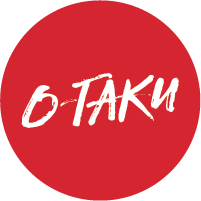Although its popularity rose with the release of the anime adaptation, made mainstream via popular streaming platforms such as netflix and crunchyroll, Attack on Titan’s popularity was kept high thanks to consistent good writing and plot development by the author. At first, its plot was very simple to understand, humans being threatened by Titans and Eren wanting to eradicate Titans. But as the series went on, topics such as freedom, truth, knowledge and an overwhelming amount of historical and symbolic references could be found in it.
Volume 34 is set to release sometime during the summer and according to various sources, there will be an extended final chapter in its volume release, so make sure to put your hands on it!
This article will be mostly explanations as to how to understand many of the confusing parts of the final chapters, so before you read further, please be aware that it will contain spoilers!
Let’s start with chapter 138 from volume 34, a chapter depicting Mikasa’s dream of a perfect life together with Eren. This chapter’s key moment is when Mikasa was asked by Eren to forget about him but she decided that she could not, right before dealing the finishing blow to the series’ main protagonist under the eyes of Ymir. Now, one could wonder, what does Ymir represent here and why does she smile in front of this scene? If we go back to what Ymir represents, she is in fact a slave who was in love with the king to whom she belonged. Because of her love, she was a prisoner, her love for the king was what stopped her from setting herself free of all the torments and being finally happy. Spending her entire existence to be enslaved to someone, unable to oppose the one she loved and doing exactly as the king asked every single moment of her life. The same type of behavior could be found in the character of Mikasa, whose actions are inherently loyal to Eren in every way possible. Her overwhelming strength as a soldier is very reminiscent of Ymir’s own ability to defeat the king’s enemies. Ymir could easily see herself in Mikasa and her actions.
What sets Mikasa apart in this case, is that right before slaying Eren, her last words were words of rebellion, opposition to the demands Eren made towards her. She was able to keep loving, but still not obey blindly to the one she loves. This is something Ymir was never able to do during her life, until her death. By doing her choice of keep loving Eren and opposing Eren’s request, Mikasa symbolically freed herself from being a slave to Eren while choosing her own path. She accomplished what Ymir always dreamed of doing. Which put a smile on Ymir’s face, allowing her to finally rest in peace.
Now let’s talk about chapter 139 from volume 34. The chapter begins with Eren explaining to Armin that he truly does not have any other choice than move forward, that every choice made was inevitable due to Ymir’s influence on the course of events. Then what does freedom truly mean? Was Eren ever truly free? The author does not actually let any character talk about freedom, when it is the ultimate quest of Eren. Many viewers would expect a moral lesson taught on freedom, but there was none of it. That could be due to Hajime Isayama’s desire to let the reader make their own thoughts on the matter and ask themselves those questions.
Isayama has used many historical references throughout his work, from references to the segregation of jewish people under the nazi regime to the impacts of wars and bombs on their survivors in the first few chapters. We can conclude that Isayama is quite fond of history itself. During the last chapter, one of the biggest irony was that despite Eren’s sacrifice, we see the emergence of an army choosing to fight. Despite the promises of previous chapters made by humans, stating that if they could survive, they would never make the same mistakes again, war is once again imminent. It is no secret that Attack on Titan portrays many ugly sides of mankind. Despite being freed of the Titans, living in a world without any Titans, humans would keep fighting, those who have the freedom and will to fight shall continue waging wars. In the end, the causes of mankind’s suffering were never the Titans, but what mankind made use of the Titan powers, and the choices humans made are now bound to repeat themselves inevitably.
Do notice that despite not doing it in a very cliched manner, Eren’s end goal at the beginning of the series: Eradicating all Titans, was accomplished. In fact, despite the story’s tone changing drastically from the start of the series, his end goal was nonetheless accomplished. This is to remind everyone that analyzing a manga or an anime does not need to have every detail being profound or deep, noticing the more simple and less subtle aspects is just as relevant. We can observe in the same way a very simple illustration from chapter 139 from volume 34. In fact, the various reactions of Eren’s friends when discovering the truth about his actions are very similar to how the author could expect the fans to react upon reading the last chapter. Isayama is a master of being able to capture his audience’s feelings and portray it through his characters after all.
Hajime Isayama is still young and will probably return with future works just as epic, so make sure to follow his future works! In the meantime, no matter what your goal is, don’t forget to Sasageyo!
Find our selection of Attack on Titan manga here!




